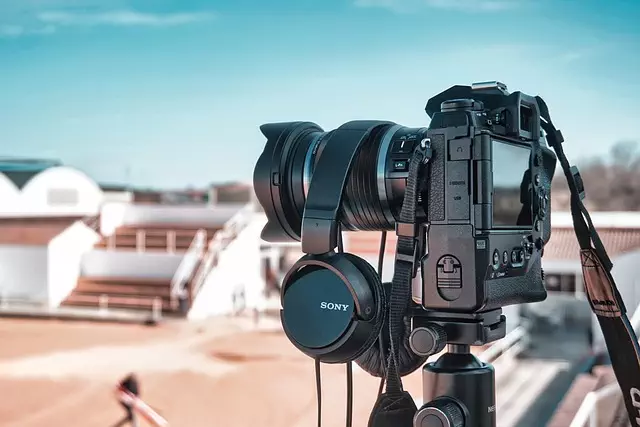TL;DR:
DivX, developed in the late '90s, revolutionized digital media by introducing efficient video compression technology that balanced quality and file size. It enabled smoother streaming, paved the way for modern streaming services, and established interoperability standards. Despite new formats like MP4 and 4K, understanding DivX history remains relevant. Converting DivX videos to compatible formats (e.g., MP4) is crucial for preserving older video libraries on modern systems and ensuring seamless access across diverse devices. In the early 2000s, developers addressed compatibility challenges by creating conversion tools, breaking down barriers to digital media sharing. Today, knowing how to convert DivX is essential for digitizing historical content and maintaining high-quality standards in the evolving digital media landscape.
Introduction:
In the realm of digital media, few innovations have left as lasting an impact as DivX, a codec that revolutionized video compression in the late 1990s. This article delves into the legacy of DivX and introduces a groundbreaking technique for converting DivX files—a pivotal moment in the continuous evolution of digital media. We’ll explore how this new method addresses historical challenges, offers significant benefits, and opens doors to diverse applications, from streaming to video editing. Moreover, we’ll discuss future implications and potential enhancements, shedding light on the ever-evolving landscape of digital media through the lens of DivX conversion.
Understanding DivX and Its Legacy

DivX, a codec developed in the late 1990s, revolutionized digital media by offering high-quality video compression at a time when internet bandwidth was still limited. This pioneering technology allowed users to compress videos significantly, making them easier to stream and download. By providing an efficient way to reduce file sizes without sacrificing visual quality, DivX paved the way for today’s streaming services and online video platforms.
Its impact extended beyond compression; DivX introduced a standard that encouraged interoperability between devices and platforms. This meant users could enjoy videos encoded in DivX on various devices, from computers to early digital media players. Today, as we explore new formats like MP4 and 4K resolution, understanding the legacy of DivX offers valuable insights into the evolution of digital media. Furthermore, learning how to convert videos from DivX format is still relevant, especially for those with older video libraries who wish to ensure compatibility with modern systems.
– Brief history of DivX and its role in digital media evolution.

DivX, a codec that revolutionized digital media compression, emerged in the late 1990s as a game-changer. Initially designed to improve video quality while reducing file sizes, DivX played a pivotal role in the early days of online video sharing. Its advanced compression techniques allowed users to stream and download videos more efficiently, paving the way for platforms like YouTube and Netflix.
Over time, DivX evolved from a simple codec to a comprehensive solution, including tools for encoding, decoding, and transcoding media files. The ability to convert DivX has become essential, as it enables users to adapt content for various devices and platforms. With how to convert DivX guides readily available, individuals can now easily manage their digital media collections, ensuring compatibility across different systems while preserving the quality that made DivX an industry standard in its time.
– Explanation of the challenges it aimed to address.

In the early 2000s, digital media faced significant challenges in terms of file compatibility and user experience. One of the most prevalent issues was the widespread use of DivX, a video compression format that, while efficient for storage, was not supported across all devices and platforms. This limited users’ ability to share and play back videos seamlessly, hindering the growth of online video streaming and digital entertainment.
The primary goal of pioneering innovations in this space was to address these compatibility issues by developing solutions that would allow DivX files to be easily converted into more universally accepted formats. By introducing advanced conversion tools and libraries, developers aimed to break down barriers and ensure that users could enjoy their digital media content without the constraints imposed by proprietary formats like DivX. This shift towards standardization and cross-platform compatibility was crucial in paving the way for the modern digital media landscape we enjoy today.
The Innovation: Converting DivX Files

In the realm of digital media, where formats evolve as rapidly as technology advances, a pioneering innovation stands out: converting DivX files. DivX, once a dominant video compression format, has seen its popularity wane with the rise of newer, more efficient codecs like H.264 and H.265. However, for legacy reasons, many older videos still exist in this format, posing a challenge for users looking to play them on modern devices or share them online.
Converting DivX files has become an essential step for digitizing these old videos and making them accessible to a broader audience. This process involves transcoding the video from DivX to more universally supported formats like MP4, using specialized software that preserves the original quality while ensuring compatibility with modern media players and streaming platforms. Learning how to convert DivX files is thus not just about preserving history; it’s about enabling seamless access to digital content across generations of devices and formats.
In conclusion, DivX’s pioneering spirit in the realm of digital media has left an indelible mark on our entertainment landscape. By tackling the challenges of video compression and compatibility, DivX files revolutionized how we consume media. Today, understanding how to convert DivX remains crucial, as it ensures these historical formats can continue to be accessible and viewed by future generations, preserving the legacy of this innovative digital media standard.
